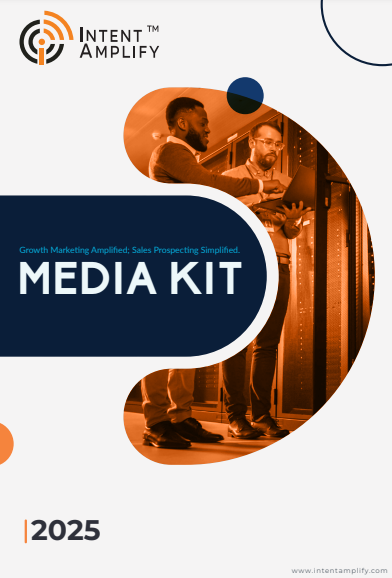
How to Scale Your ABM Strategy Across Global Markets Using Intent Data
- Last updated on: October 14, 2025
Globalizing an ABM (Account Based Marketing) strategy to the different international markets is not merely about extending the campaigns; it is about refining the accuracy with which you can target your potential clients. The face of businesses is changing, and the challenge to marketing leaders is getting bigger; they need to figure out how to connect with different regions, industries, and even with the right decision-makers, without losing the main idea of the message. The traditional segmentation and manual targeting that worked well in the local scenario do not produce effective results when the audience is spread across North America, EMEA, and APAC. Hence, the intent data in Global Markets function is vital in such situations.
Through this, marketing teams can have a clear picture of who the buyers under the cycle are, what issues they care about, and the time to engage them. ABM programs that are successful in 2025 will have to rely on intent signals to move further than just assumptions and enter into growth that can be verified by data.
Understanding the Role of Intent Data in Global ABM
Intent data in Global Markets refers to all the information that shows the behavior of a person, in this case, actively researching online. For B2B marketers, it is a real game-changer as a kind of ABM strategy that turns into precise engagement instead of mere guessing. The global intent data pinpoints the different practices that almost every marketplace has a unique buying pattern and trend as they are.
North American decision-makers often look for technology use cases through research as they cast a vendor selection. Data privacy and compliance issues have a great impact on the content users in the European region. Localized thought leadership is the key to brand trust in the APAC area. Enterprises can then aggregate and analyze these regional signals to rank the prospects that are really ready to purchase solutions and then organize the communication in accordance with them. In doing so, a global framework-for the time being, is created based on local intelligence.
Aligning Data Infrastructure for Global ABM Execution
Scaling a Global ABM strategy requires a unified data architecture. Most companies suffer from fragmentation, which means that their local teams work separately, and the information flow is not coherent. The initial step is to collect intent data in a common CRM or marketing automation system. By doing this, every region will be able to use the same insights that are standardized and of high quality.
After that, marketers should bring together different intent sources. They can get the information from first-party (their own digital behavior), second-party (partner networks), and third-party (external web engagement). The reason is that the mixture of these different kinds of data makes it easier to understand who the potential buyers are in different countries. Moreover, when data is in line with the use of automation, the international marketing teams can provide the same message in different languages, which helps to achieve a culture-sensitive approach and at the same time, maintain the brand’s identity.
Levels of Intent Data in Global Markets Integration in ABM Strategy
| Integration Level | Data Sources Used | Impact on ABM Effectiveness | Example Use Case |
| Basic | First-party website visits | Limited, siloed visibility | Single-market targeting |
| Intermediate | First + third-party data | Enhanced cross-region insight | Multi-market targeting |
| Advanced | All three data sources unified | Real-time global orchestration | Global ABM automation and personalization |
Implementing Scalable Technology Frameworks for Global ABM
To achieve a worldwide ABM strategy that works, one must rely on the proper mix of tools and automation frameworks that are capable of scaling without losing accuracy. Just the intent data in Global Markets is strong; however, it has to be linked with marketing and sales systems that can lead the implementation.
Integrating Marketing Automation with Intent Signals
Platforms of automation, such as Marketo, HubSpot, or Pardot, give power to marketers to launch customized campaigns just at the time when the intent signals are visible. By doing so, the time that goes between data collection and outreach is zero. With the integration of regional segmentation, automation is being used in the perfect way to make sure that campaigns reach the correct accounts in the right markets at the correct time.
Using AI to Enhance Account Prioritization
The use of AI for decision-making in analytics dramatically enhances scalability as it keeps learning continuously from the engagement behavior. Such systems are instrumental in identifying various trends e.g. what topics for content and what format are the most liked in a specific region. The outcome is a more intelligent ABM model which is self-optimizing as per the latest data thus conversion rates and campaign ROI are getting better and better.
Ensuring Data Compliance Across Regions
Compliance is the backbone of sustainable ABM expansion. With different privacy laws governing each region, GDPR in Europe, CCPA in the U.S., and PDPA in Singapore. Enterprises must integrate compliance automation tools. These ensure that data collection and activation processes remain transparent and regulation-friendly while maintaining marketing agility.
Localizing Content and Messaging for Diverse Markets
Localization is often the defining factor between scalable and stagnant ABM campaigns. A single global message can fail if it doesn’t align with local buyer expectations. Intent data offers actionable clues for marketers to adjust tone, content type, and channel preferences.
For example, cybersecurity buyers in Germany respond well to compliance-focused whitepapers, while U.S. buyers prefer ROI-driven case studies. Using these insights, content teams can personalize messaging at scale without diluting brand consistency. The key lies in connecting global ABM coordination with localized narrative delivery. bridging corporate goals and regional relevance through intent-driven personalization.
Building Regional Alignment Between Sales and Marketing
The success of an ABM strategy depends on how well sales and marketing align. Especially across international markets. When teams share a unified view of intent data in Global Markets, they gain a mutual understanding of account priorities. Sales can focus on accounts showing active research signals, while marketing nurtures them through personalized journeys.
In global operations, this alignment demands collaboration frameworks. Regular cross-regional syncs, shared dashboards, and intent-triggered alerts ensure that everyone works from the same intelligence layer. It eliminates redundancy and accelerates deal velocity, enabling faster conversions from awareness to purchase. The impact compounds when intent insights are shared continuously, not quarterly.
Measuring Global ABM Performance with Intent Insights
An advanced ABM strategy thrives on measurement. Yet, tracking performance across global markets presents complexity. Intent data offers a unified lens to evaluate engagement depth, not just lead volume. It helps identify which campaigns drive real influence and where adjustments are needed.
Metrics such as account penetration rate, engagement intensity score, and buying stage progression become more reliable when paired with intent data in Global Markets. Global marketers can then move from vanity metrics to value metrics. They are quantifying true intent-driven growth. Continuous feedback loops allow enterprises to optimize campaigns dynamically, ensuring consistency and scalability across regions.
Overcoming Global ABM Challenges
Scaling globally introduces challenges such as inconsistent data privacy laws, regional compliance variations, and differing digital behavior. While intent data provides visibility, marketers must also ensure ethical data usage and transparency. The European GDPR, U.S. privacy frameworks, and APAC’s growing compliance measures all demand local adherence.
The best-performing organizations handle this through unified governance structures and region-specific compliance checks. Intent Amplify®’s ABM frameworks, for instance, often emphasize transparent data handling alongside personalization. That balance of trust and precision is what defines sustainable ABM maturity in global contexts.
Conclusion
A scalable ABM strategy is no longer a luxury. It’s a necessity for global growth. Intent data in Global Markets empowers enterprises to align regional efforts, personalize experiences, and engage high-value accounts with precision. By connecting insights to action, organizations move beyond one-size-fits-all campaigns and toward meaningful, data-backed conversations. The outcome is not just higher conversion but stronger brand equity across every market. In the coming years, the ability to read intent signals and adapt them globally will separate agile market leaders from those left behind.
FAQs
1. How does intent data in Global Markets enhance an ABM strategy for global markets?
Intent data reveals what potential buyers are actively researching, allowing marketers to tailor campaigns by geography and buying stage. It bridges the gap between awareness and engagement, ensuring outreach is timely and relevant.
2. What is the biggest challenge in scaling ABM globally?
The main challenge lies in maintaining data consistency and compliance across regions. Fragmented systems and differing privacy laws can slow alignment between marketing and sales teams.
3. How can organizations localize ABM campaigns effectively?
By using intent data in Global Markets to identify regional content preferences, industries of focus, and engagement channels, organizations can deliver locally relevant messages while preserving a unified global brand tone.
4. Which metrics best measure ABM success across markets?
Metrics such as account engagement rate, buying group progression, and pipeline contribution offer better insight than lead volume. These metrics show how effectively campaigns convert intent into outcomes.
5. Is it necessary to use automation tools for global ABM?
Yes. Automation platforms streamline data synchronization, regional coordination, and personalized outreach. They ensure ABM strategies scale efficiently without compromising quality or consistency.



